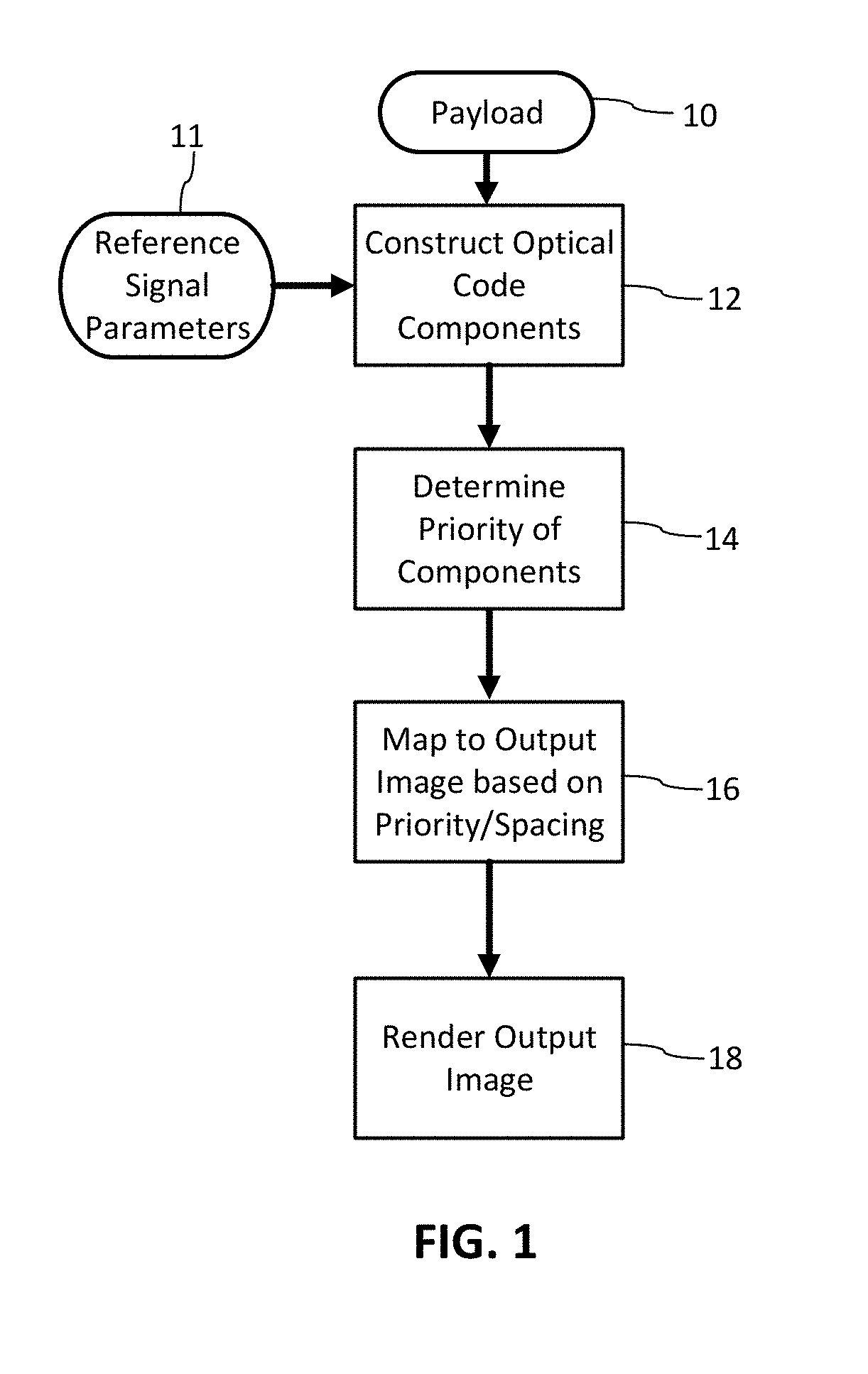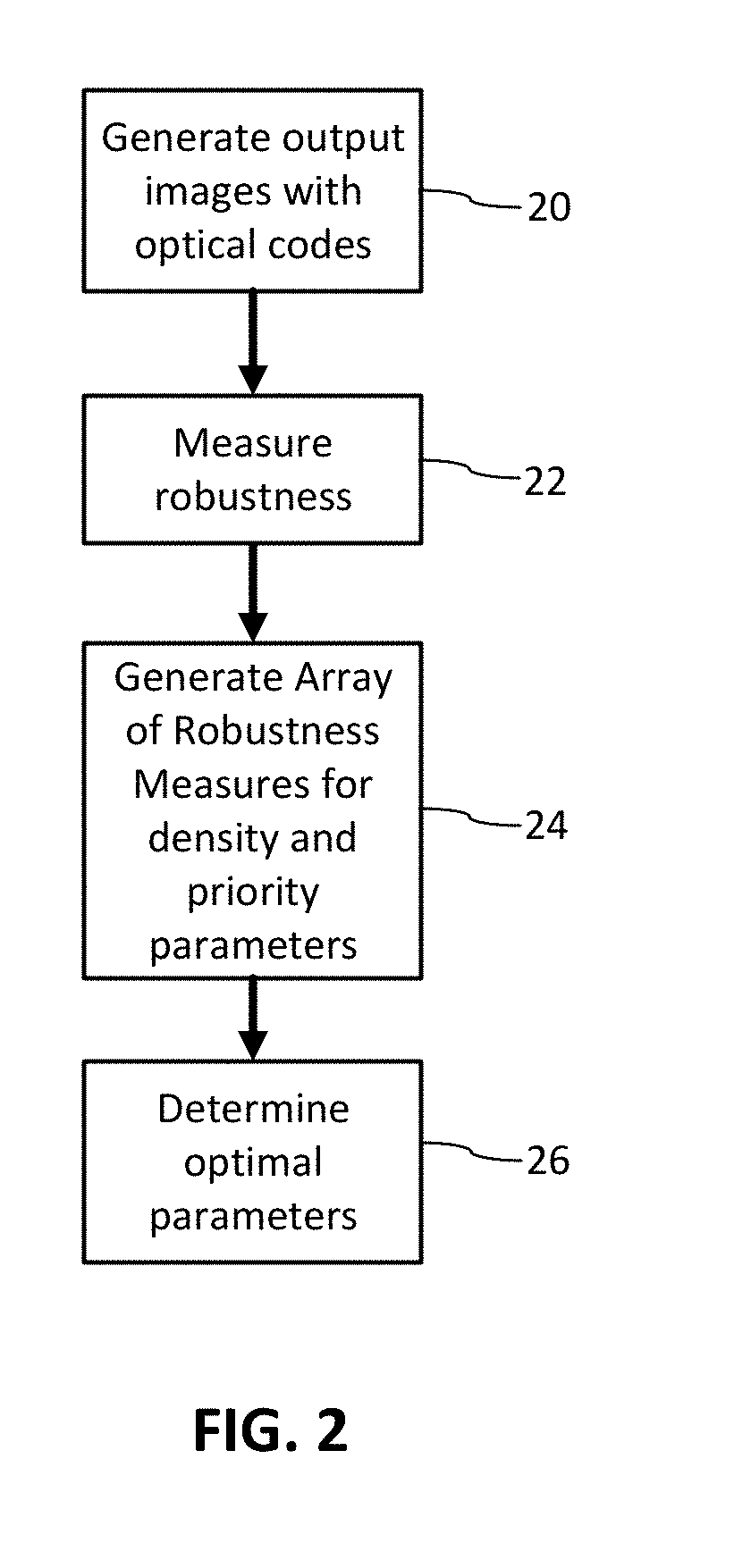Generating and reading optical codes with variable density to adapt for visual quality and reliability
a variable density, optical code technology, applied in the field of image processing to generate machinereadable optical codes, can solve the problems of reduced size, less reliable, and difficult to find locations on objects, and achieve the effect of improving readability
- Summary
- Abstract
- Description
- Claims
- Application Information
AI Technical Summary
Benefits of technology
Problems solved by technology
Method used
Image
Examples
Embodiment Construction
[0070]This specification details embodiments of the technology with reference to flow diagrams and narrative descriptions. The diagrams and descriptions are implemented with processing modules that are most commonly realized by software instructions for configuring programmable hardware devices. In some embodiments, such software instructions are converted to firmware for integration into printers and scanners, or converted into digital logic circuitry.
[0071]FIG. 1 is a diagram of a method of generating an optical code with variable spatial density to adapt the code for visual quality and reliability constraints. An objective is to generate an optical code for insertion into an image or other carrier such that the parameters of the optical code are optimized. These parameters include robustness and visual quality. The method achieves improved robustness by determining a priority of optical message components that attains or surpasses robustness metrics while also providing desired s...
PUM
 Login to View More
Login to View More Abstract
Description
Claims
Application Information
 Login to View More
Login to View More - R&D
- Intellectual Property
- Life Sciences
- Materials
- Tech Scout
- Unparalleled Data Quality
- Higher Quality Content
- 60% Fewer Hallucinations
Browse by: Latest US Patents, China's latest patents, Technical Efficacy Thesaurus, Application Domain, Technology Topic, Popular Technical Reports.
© 2025 PatSnap. All rights reserved.Legal|Privacy policy|Modern Slavery Act Transparency Statement|Sitemap|About US| Contact US: help@patsnap.com



